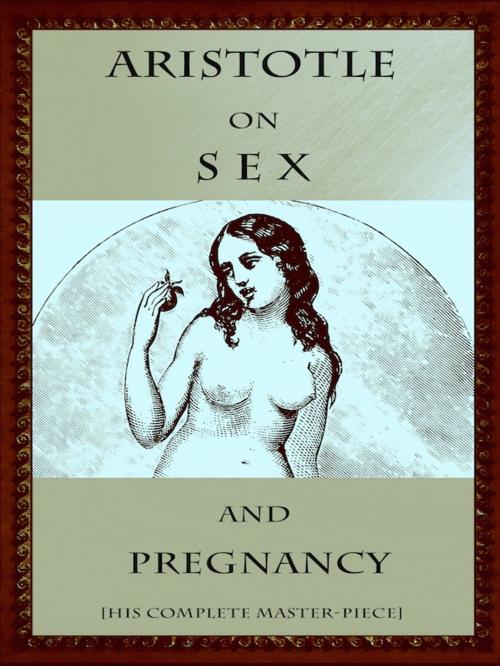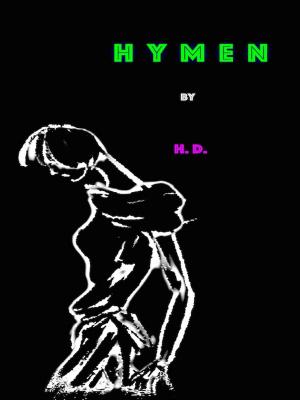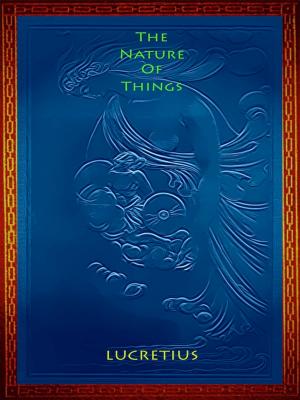Aristotle on Sex and Pregnancy
His Complete Master-Piece
Nonfiction, Health & Well Being, Health, Health Care Issues| Author: | Aristotle | ISBN: | 1230001434927 |
| Publisher: | Editions Artisan Devereaux LLC | Publication: | November 19, 2016 |
| Imprint: | Language: | English |
| Author: | Aristotle |
| ISBN: | 1230001434927 |
| Publisher: | Editions Artisan Devereaux LLC |
| Publication: | November 19, 2016 |
| Imprint: | |
| Language: | English |
“Thus Man’s most noble Parts describ’d we see;
(For such the Parts of Generation be;)
And they that carefully survey’t, will find,
Each Part is fitted for the Use design’d:
The Purest Blood we find, if well we heed,
Is in the Testicles turn’d into Seed…”
Aristotle's Master-piece is a sex manual and a midwifery book that was popular in England from the early modern period through to the 19th century.
The book was neither by Aristotle nor usually considered a masterpiece. It is, however, one of the best-selling books ever produced in English on sex and making babies.
First published in London in 1684, it went through hundreds of editions in England and America. It was still for sale, largely unchanged, into the 1930s and beyond.
The book was banned in Britain in the wake of the 1857 Obscene Publications Act and in North America, when the Comstock Act blocked its publication.
The work contains some of the most explicit discussions of the mechanics of sex and reproduction available in English at the time, in an easy-to-read question and answer format, including “What is carnal copulation?” and “How are hermaphrodites begotten?”
The first part covers anatomy, sexual intercourse and marriage. The second part was intended for married women and explains pregnancy and midwifery.
The first part starts with a description of the male and female sex organs in the first chapter. The second chapter advocates sexual intercourse in monogamous relationships and warns against polygamy and adultery because it is forbidden by Christian doctrine. It finishes with an explanation of when the reproductive age begins and ends. The third chapter explores virginity. It correctly states that a torn hymen does not mean a woman is not a virgin.
The second part continues with the process of fertilization, pregnancy and how the sex of the fetus can be determined. The second chapter provides advice on how women can become pregnant. The third chapter describes the progress of pregnancy. Failure of the pregnancy, infertility and its causes are the subject of the fourth chapter.
Although little-known today, Aristotle’s Master-piece was the go-to book for generations of British and American readers, male and female, who wanted to know about sex and making babies.
“Thus Man’s most noble Parts describ’d we see;
(For such the Parts of Generation be;)
And they that carefully survey’t, will find,
Each Part is fitted for the Use design’d:
The Purest Blood we find, if well we heed,
Is in the Testicles turn’d into Seed…”
Aristotle's Master-piece is a sex manual and a midwifery book that was popular in England from the early modern period through to the 19th century.
The book was neither by Aristotle nor usually considered a masterpiece. It is, however, one of the best-selling books ever produced in English on sex and making babies.
First published in London in 1684, it went through hundreds of editions in England and America. It was still for sale, largely unchanged, into the 1930s and beyond.
The book was banned in Britain in the wake of the 1857 Obscene Publications Act and in North America, when the Comstock Act blocked its publication.
The work contains some of the most explicit discussions of the mechanics of sex and reproduction available in English at the time, in an easy-to-read question and answer format, including “What is carnal copulation?” and “How are hermaphrodites begotten?”
The first part covers anatomy, sexual intercourse and marriage. The second part was intended for married women and explains pregnancy and midwifery.
The first part starts with a description of the male and female sex organs in the first chapter. The second chapter advocates sexual intercourse in monogamous relationships and warns against polygamy and adultery because it is forbidden by Christian doctrine. It finishes with an explanation of when the reproductive age begins and ends. The third chapter explores virginity. It correctly states that a torn hymen does not mean a woman is not a virgin.
The second part continues with the process of fertilization, pregnancy and how the sex of the fetus can be determined. The second chapter provides advice on how women can become pregnant. The third chapter describes the progress of pregnancy. Failure of the pregnancy, infertility and its causes are the subject of the fourth chapter.
Although little-known today, Aristotle’s Master-piece was the go-to book for generations of British and American readers, male and female, who wanted to know about sex and making babies.















